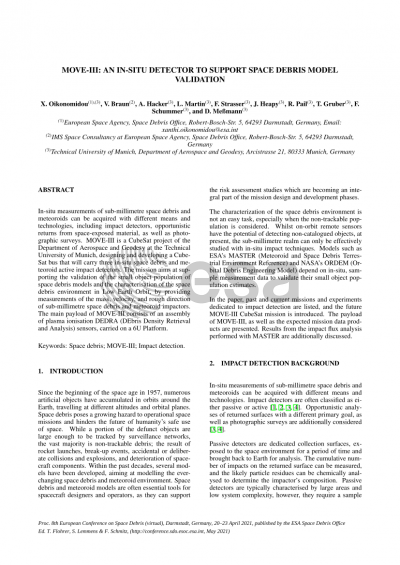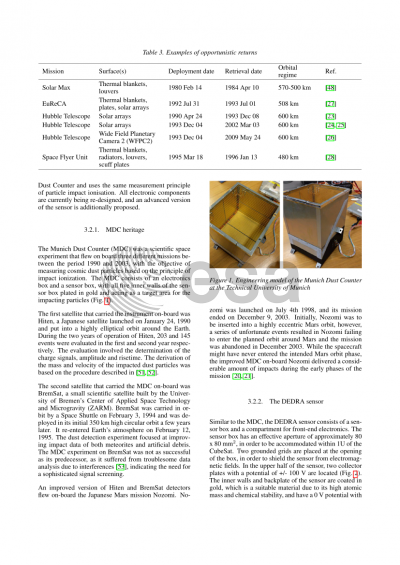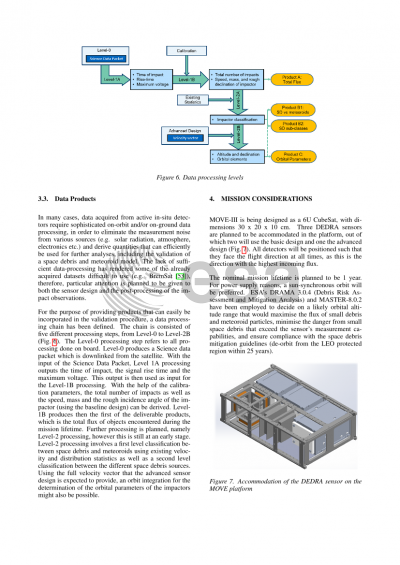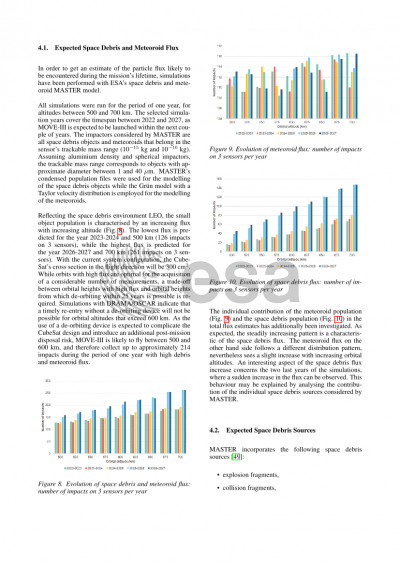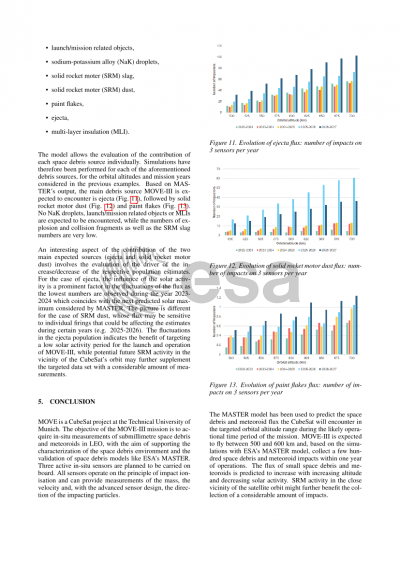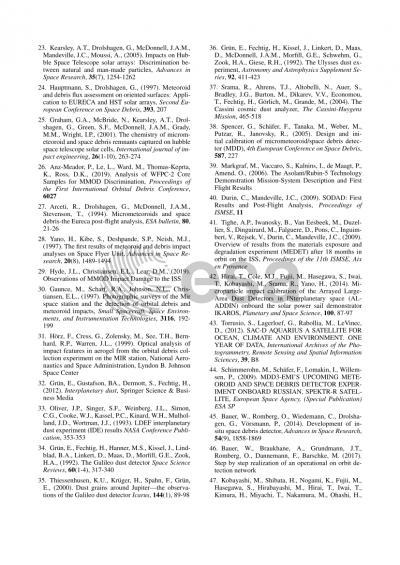Document details
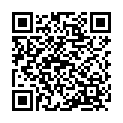
Abstract
Since the beginning of the space age in 1957, numerous artificial objects have accumulated in orbits around the Earth, travelling in different altitudes, and planes. Space debris poses a growing hazard to operational space missions and hinders the future of humanity’s safe use of space. While a portion of the defunct objects are large enough to be tracked by surveillance networks, the vast majority is non-trackable debris; the result of rocket launches, break-up events (from accidental or deliberate collisions and explosions) and deterioration of spacecraft components. Within the past decades, several models have been developed, aiming at modelling the ever-changing space debris and meteoroid environment. Space debris and meteoroid models are great tools for spacecraft designers and operators, as they can support the risk assessment studies which are becoming an integral part of the mission design and development phases.
The characterization of the space debris environment is not an easy task, especially when the non-trackable population is considered. Whilst on-orbit remote sensors have the potential of detecting non-catalogued objects, at present, the sub-millimetre realm can only be effectively studied with in-situ impact techniques. Models such as ESA’s MASTER and NASA’s ORDEM depend on in-situ, sample measurement data to validate their small object population estimates. Typically, the main validation source are impact features from spacecraft or components surfaces, exposed to the space environment for a period of time and brought back to Earth for analyses. Returned surfaces can provide invaluable information, however, they depend on missions to return them, and are characterized by limited orbital coverage and time of exposure.
A potential validation source, which could help reduce the spatial and temporal knowledge gaps of the small object population, is data from in-situ detectors. A small number of in-situ impact detection experiments have already flown on-board spacecraft or space stations, but their data has yet to be integrated into the current space debris and meteoroid models. This paper provides a summary of the past, current and future in-situ detectors, along with the lessons learnt from past experiences. Particular focus is put on the future CubeSat mission MOVE-III, and the potential of using its measurement data for the small particle validation of ESA’s MASTER model.
MOVE-III is a CubeSat project of the Department of Aerospace and Geodesy at the Technical University of Munich. The mission aims at supporting the validation of the small object population of MASTER, by providing measurements of the mass, velocity, and crude direction of sub-millimetre space debris and meteoroid impactors. The main payload of MOVE-III consists of an assembly of plasma ionisation DEDRA (DEbris Density Retrieval and Analysis) sensors, carried on a 6U Platform. The design of the sensor is based on the legacy of the MDC (Munich Dust Counter) sensor and the lessons learnt from the three missions that carried the instrument on-board. The data acquisition and processing, along with a description of how MOVE-III measurements could be introduced in MASTER’s validation processing chain, is discussed.
Preview
